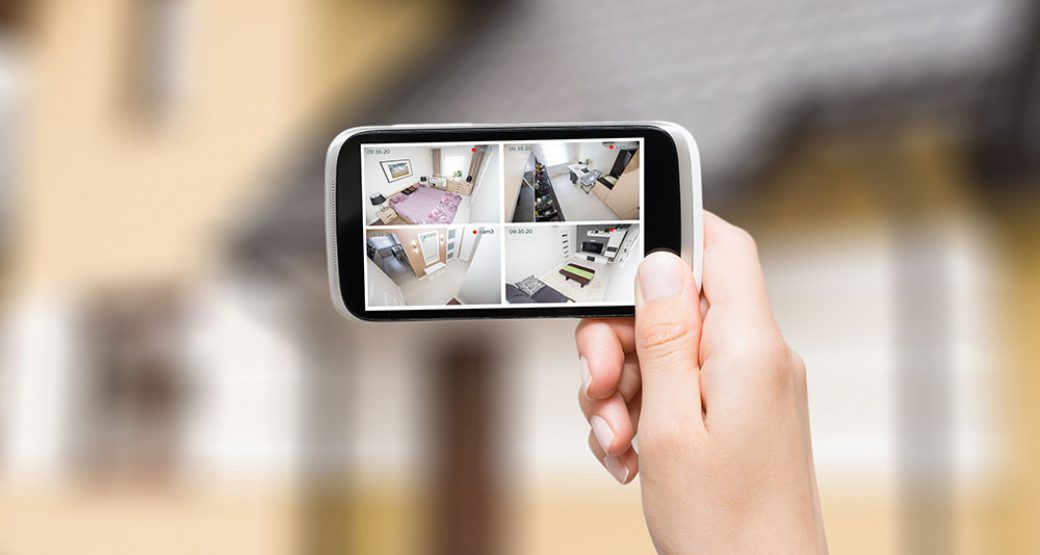You may think an alarm is enough, but burglars do tend to target homes without a home video surveillance system. A study by the University of North Carolina at Charlotte’s Department of Criminal Justice and Criminology found that almost 60 percent of convicted burglars mentioned that the presence of a home video surveillance system influenced their decision to target another property.
But, if you think that installing a few visible cameras is enough to truly secure your home, you’re mistaken. An incomplete or inefficient home surveillance system can leave you as vulnerable as a non-existent security system. These tips will help you get the most out of your home video surveillance system.
Choosing the Right Indoor and Outdoor Cameras for Your Home Video Surveillance System
Finding the right indoor and outdoor cameras for your home video surveillance system can be a daunting task, but even the best home security strategy is of no use if you don’t have the right equipment, so choose wisely.
Different types of indoor and outdoor cameras on the market include:
- Dome Cameras. These are typically used indoors and installed on ceilings. Some dome cameras come with infrared illuminators, which allow them to record videos in low-light conditions.
- Bullet Cameras. These are hidden cameras. They are typically used outdoors, especially where you need long-term viewing capabilities (like yards overnight). Bullet cameras are placed inside protective cases and are weather-proof.
- Box Cameras. These cameras are designed for indoor use. Box cameras are popular in home video surveillance systems due to their ability to change and use lenses to suit different security surveillance needs. They provide clear images in extremely low-light conditions. Some box cameras are also known as day/night cameras as they can change from color to black and white by evening or in low-lux.
- Pan-Tilt-Zoom Cameras. These cameras can be controlled using remote controllers, a joystick, or a DVR. They can tilt left, right, up, and down. They also come with zoom capability. However, pan-tilt cameras are somewhat expensive and can require an additional cable for operation.
How to Properly Place Home Surveillance Cameras
Even high-quality home surveillance cameras are useless if they’re not covering the most vulnerable areas of your home such as your back door, front door, backyard, windows, and gates. So, irrespective of the type of home surveillance cameras you use, their effectiveness can be influenced by their location.
Statistics show that 34 percent of burglars enter through the front door, making this the most important area for home surveillance camera placement. These cameras should be placed at the second-floor level to prevent vandalization or tampering. However, if you’re living in a single-story home, you can use protective covering. You can also install a video doorbell for additional protection and convenience. All this goes for back and side doors as well. Make sure all your entryways are covered by some form of video surveillance.
Once you’ve secured all your doors, you’ve reduced the chances of burglars entering your home by almost 80 percent. To make your home even more secure, you may also want to install home surveillance cameras in the following areas:
- Off-street windows
- Basement
- Garage
- Driveways
Stopping Cyber Criminals from Hacking Home Security Cameras
Connected home security cameras pose significant security threats as they are vulnerable to hacking by cybercriminals. But, the good news is that you can take simple measures to prevent cybercriminals from hacking home security cameras.
In addition to the home video surveillance system, you most likely also have smartphones, tablets, laptops, smart TVs, gaming consoles, etc., connected to your home internet. All these devices can pave the way for cybercriminals to gain access to your home security cameras and access your private information. So, maintaining an inventory of these devices and securing them against potential hack attacks can help you prevent cybercriminals from hacking your home automation and security systems.
It’s not easy to tell if your home security cameras have been hacked by cybercriminals. So, one way to detect a breach is to watch out for strange noises coming out of your home video surveillance system. If you hear murmurs coming through, immediately check the settings of your home security cameras. Check the admin settings and change the password as soon as you can. Also, by simply tracking data spikes on your network, you can detect hacks. So, pay attention to the increase in data usage that can result from suspicious logins to one or more security devices.
It should go without saying, but just like it’s unsafe to leave your car unlocked, it’s unsafe to leave your home security system without password protection. Home video surveillance systems these days are shipped with default passwords that can be easily guessed by cybercriminals. So, it’s extremely important to protect your home security system with strong and unbreakable passwords. If you have difficulties in remembering passwords, you can use a password manager that’ll do all the remembering for you. Encrypt Wi-Fi networks wherever cameras are hosted and don’t share your passwords with anyone.
The best way to prevent cybercriminals from hacking home security cameras is to install a smart home video surveillance system that is built to protect your network and all devices connected to it, including your home security cameras and monitors. You can also install smart home security solutions that use artificial intelligence to detect unusual behavior and immediately report malicious activities.
Enhance Your Surveillance System with These Security Camera Features
In addition to choosing the right home video surveillance system, you also need one with useful security camera features to protect your home and loved ones. Do you want a home security system to detect burglars or are you more interested in keeping an eye on your kids? Here are a few security camera features you may not be considering.
Night Vision and Glare Protection. Depending on the function and location, you’ll want some home security cameras with infrared night vision. The distance from which your camera can record videos in low-light or no-light conditions can have a significant impact on its efficiency. Glare protection is equally important, especially if you have east or west-facing outdoor security cameras.
Live Streaming vs. Motion Activated. Home security systems with live streaming allow you to simply login in and check the live feed through your security cameras, whereas motion-activated cameras only record videos whenever motion is detected.
Field of View. Field of view refers to the width of the angle a security camera can record. This is one of the most important security camera features as it will affect how many security cameras you’ll need and their placement.
At ProTech Security, we have a strong history of experience, innovation, and customer service. The ProTech Security Advantage is more than 30 years of service in Northeast Ohio and a strong commitment to providing quality, cost-effective protection for homes, businesses, educational institutions, and government facilities. To see what ProTech Security can do for you, contact us today.




